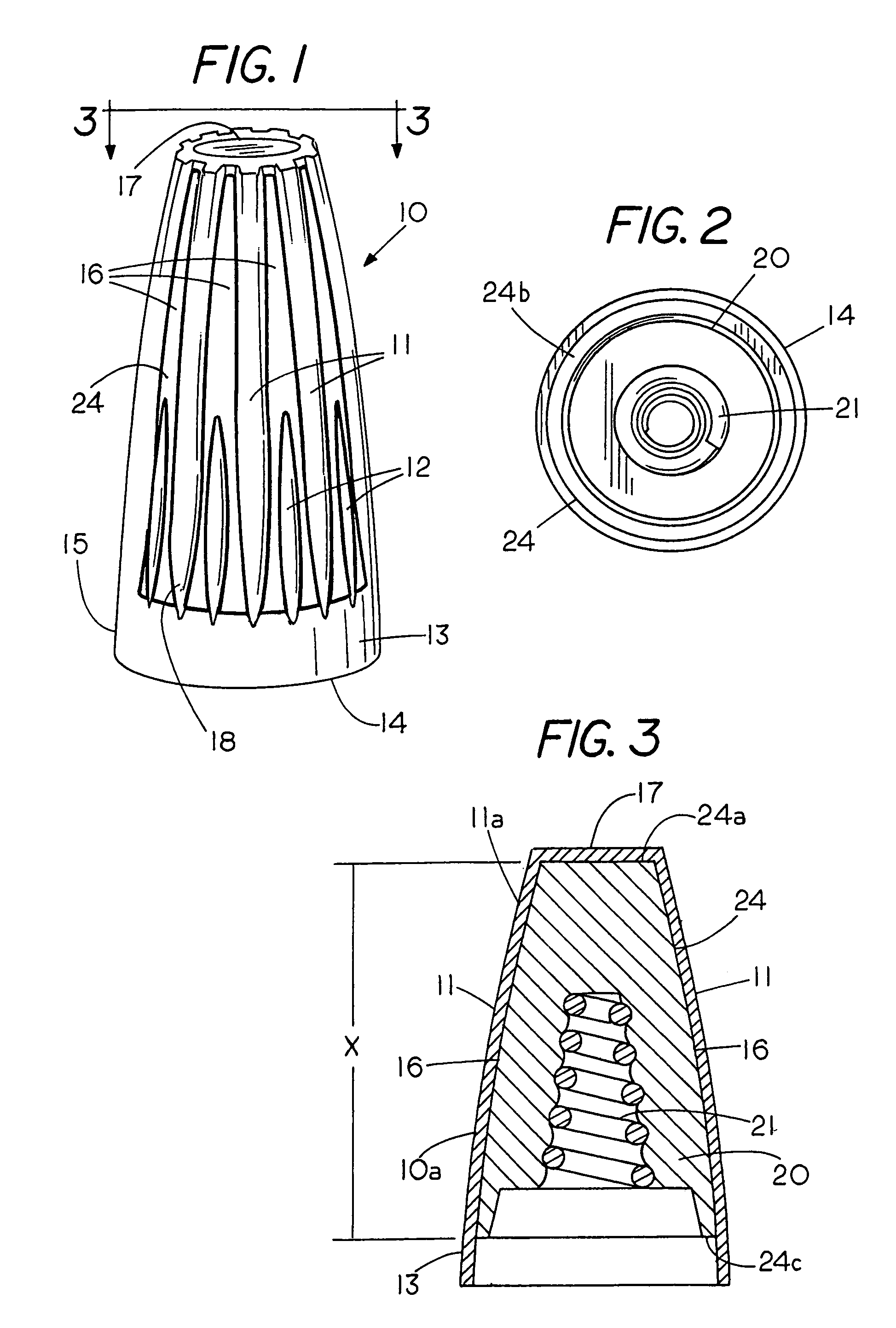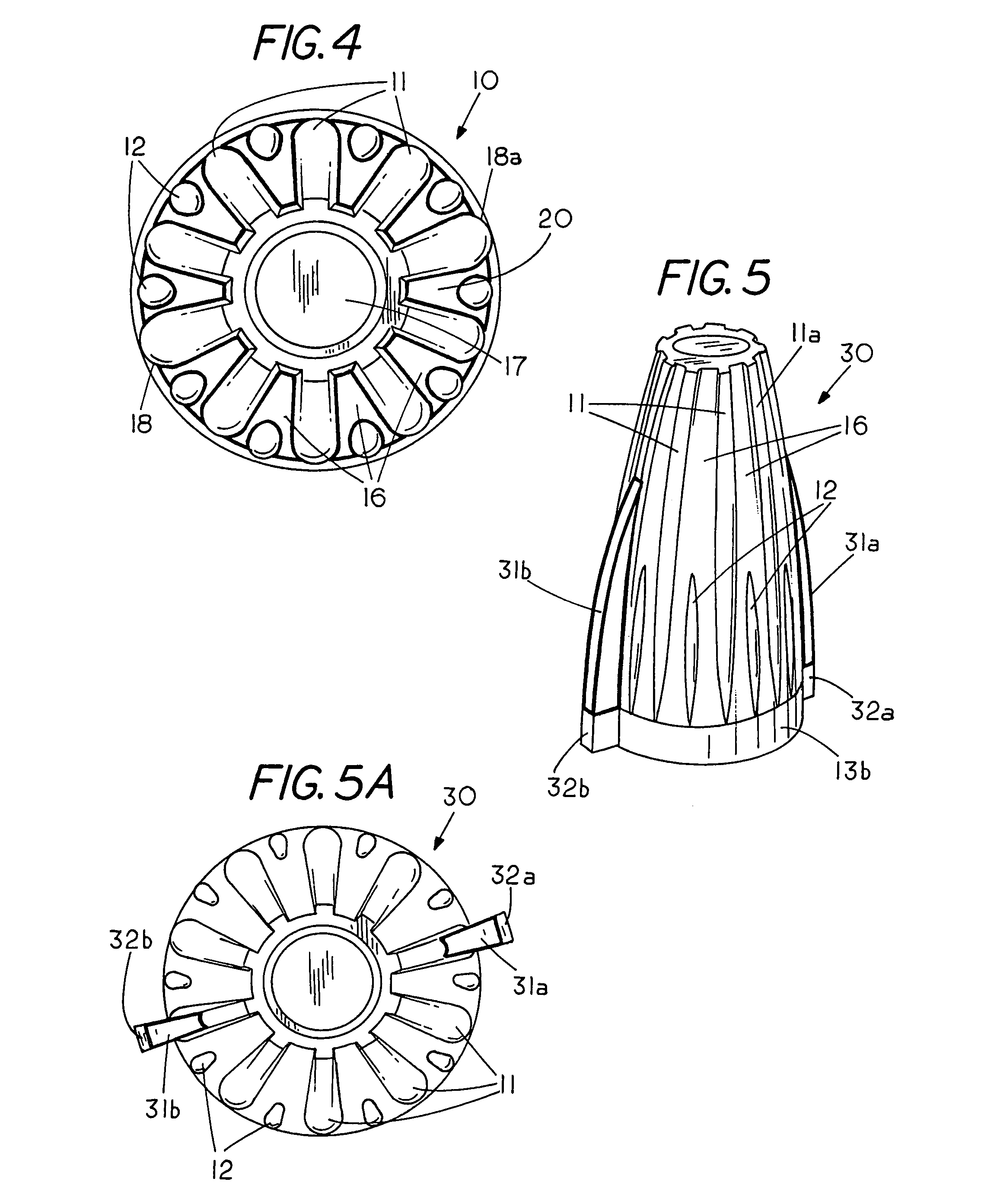Finger friendly twist-on wire connector
a twist-on wire and finger technology, applied in the direction of cable junctions, cables, electrical cable installations, etc., can solve the problems of finger fatigue, difficult to develop twist-on wire connectors, and painful hard plastic surfaces on the fingers, so as to inhibit finger fatigue and finger injury
- Summary
- Abstract
- Description
- Claims
- Application Information
AI Technical Summary
Benefits of technology
Problems solved by technology
Method used
Image
Examples
Embodiment Construction
[0025]The cushioned grip twist-on wire connectors of FIG. 1 to FIG. 8 show various examples of finger friendly twist-on wire connectors having a finger cushion material that is molded directly to a rigid shell to provide a twist-on wire connector that allows a user to comfortably grasp and repeatedly rotate the twist-on wire connector regardless of the portion or portions of the connector contacted by the user's finger or hand.
[0026]FIGS. 1-4 shows various views of one example of a finger friendly twist-on wire connector 10. A reference to FIGS. 1-4 shows the finger friendly twist-on wire connector 10 having an open-end rigid shell 20 secured to a spiral coil 21 with the rigid shell 20 having a rigid or hard outer surface 24. Rigid shell 20 includes a closed end 24a and an open-end 24c. Extending lengthwise on outer surface 24 is a cushioned cover 11a forming a circumferential grasping band 10a of length x. In the embodiment shown the cushioned cover 11a includes a closed end 17, lo...
PUM
 Login to View More
Login to View More Abstract
Description
Claims
Application Information
 Login to View More
Login to View More - R&D
- Intellectual Property
- Life Sciences
- Materials
- Tech Scout
- Unparalleled Data Quality
- Higher Quality Content
- 60% Fewer Hallucinations
Browse by: Latest US Patents, China's latest patents, Technical Efficacy Thesaurus, Application Domain, Technology Topic, Popular Technical Reports.
© 2025 PatSnap. All rights reserved.Legal|Privacy policy|Modern Slavery Act Transparency Statement|Sitemap|About US| Contact US: help@patsnap.com



